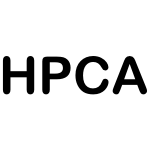51 papers:
 SIGMOD-2015-PengW #probability #query
SIGMOD-2015-PengW #probability #query- k-Hit Query: Top-k Query with Probabilistic Utility Function (PP, RCWW), pp. 577–592.
 ICALP-v1-2015-GiannopoulouJLS #complexity #kernel
ICALP-v1-2015-GiannopoulouJLS #complexity #kernel- Uniform Kernelization Complexity of Hitting Forbidden Minors (ACG, BMPJ, DL, SS), pp. 629–641.
 DHM-HM-2015-ChottikamponMMM #process
DHM-HM-2015-ChottikamponMMM #process- Improvement of Needle Bar in Textile Machine by Hitting Process (KC, SM, HM, RM, HN, HH), pp. 235–244.
 RecSys-2015-JannachLK #continuation #generative #music
RecSys-2015-JannachLK #continuation #generative #music- Beyond “Hitting the Hits”: Generating Coherent Music Playlist Continuations with the Right Tracks (DJ, LL, IK), pp. 187–194.
 STOC-2014-ForbesSS #algebra #branch #multi #order #set #source code
STOC-2014-ForbesSS #algebra #branch #multi #order #set #source code- Hitting sets for multilinear read-once algebraic branching programs, in any order (MAF, RS, AS), pp. 867–875.
 CIKM-2014-ChenHH #named #predict #video
CIKM-2014-ChenHH #named #predict #video- Clairvoyant: An Early Prediction System For Video Hits (HC, QH, LH), pp. 2054–2056.
 DATE-2013-El-NacouziAPZJM #detection #scalability
DATE-2013-El-NacouziAPZJM #detection #scalability- A dual grain hit-miss detector for large die-stacked DRAM caches (MEN, IA, MP, JZ, NDEJ, AM), pp. 89–92.
 STOC-2013-AgrawalSS
STOC-2013-AgrawalSS- Quasi-polynomial hitting-set for set-depth-Δ formulas (MA, CS, NS), pp. 321–330.
 STOC-2012-AgrawalSSS #bound
STOC-2012-AgrawalSSS #bound- Jacobian hits circuits: hitting-sets, lower bounds for depth-D occur-k formulas & depth-3 transcendence degree-k circuits (MA, CS, RS, NS), pp. 599–614.
 CIKM-2012-DybalaRAS #analysis #comparative #generative #ranking
CIKM-2012-DybalaRAS #analysis #comparative #generative #ranking- Data filtering in humor generation: comparative analysis of hit rate and co-occurrence rankings as a method to choose usable pun candidates (PD, RR, KA, KS), pp. 2587–2590.
 ICDAR-2011-ZhouCWGL #database #empirical #evaluation
ICDAR-2011-ZhouCWGL #database #empirical #evaluation- An Empirical Evaluation on HIT-OR3C Database (SZ, QC, XW, XG, HL), pp. 1150–1154.
 ICEIS-v2-2011-LiOAK #fault #identification #modelling #network #using
ICEIS-v2-2011-LiOAK #fault #identification #modelling #network #using- Patterns Identification for Hitting Adjacent Key Errors Correction using Neural Network Models (JL, KO, MSA, HBK), pp. 5–12.
 SIGIR-2011-KazaiKKM #comparative #crowdsourcing #design #evaluation #ranking
SIGIR-2011-KazaiKKM #comparative #crowdsourcing #design #evaluation #ranking- Crowdsourcing for book search evaluation: impact of hit design on comparative system ranking (GK, JK, MK, NMF), pp. 205–214.
 ESEC-FSE-2011-RahmanPHBD #question
ESEC-FSE-2011-RahmanPHBD #question- BugCache for inspections: hit or miss? (FR, DP, AH, ETB, PTD), pp. 322–331.
 DATE-2010-HuangCLH #robust
DATE-2010-HuangCLH #robust- A robust ADC code hit counting technique (JLH, KYC, MHL, XLH), pp. 1749–1754.
 KDD-2009-DengLK #algorithm #graph
KDD-2009-DengLK #algorithm #graph- A generalized Co-HITS algorithm and its application to bipartite graphs (HD, MRL, IK), pp. 239–248.
 SIGIR-2009-PesericoP #convergence #rank
SIGIR-2009-PesericoP #convergence #rank- Score and rank convergence of HITS (EP, LP), pp. 770–771.
 SAC-2009-HijikataHON #algorithm #analysis #using
SAC-2009-HijikataHON #algorithm #analysis #using- HITS algorithm improvement using anchor-related text extracted by DOM structure analysis (YH, BQH, MO, SN), pp. 1691–1698.
 DAC-2008-ReyNKKAHCS #question
DAC-2008-ReyNKKAHCS #question- DFM in practice: hit or hype? (JCR, NSN, ABK, FK, RA, CH, LC, VS), pp. 898–899.
 ICALP-A-2008-BlaserHS #set
ICALP-A-2008-BlaserHS #set- Asymptotically Optimal Hitting Sets Against Polynomials (MB, MH, DS), pp. 345–356.
 CSCW-2008-MorrisTB #collaboration #personalisation #web
CSCW-2008-MorrisTB #collaboration #personalisation #web- Enhancing collaborative web search with personalization: groupization, smart splitting, and group hit-highlighting (MRM, JT, SB), pp. 481–484.
 CIKM-2008-MeiZC #query #using
CIKM-2008-MeiZC #query #using- Query suggestion using hitting time (QM, DZ, KWC), pp. 469–478.
 HCI-IPT-2007-BartneckAK #interface #rating
HCI-IPT-2007-BartneckAK #interface #rating- Hit Me Baby One More Time: A Haptic Rating Interface (CB, PA, TK), pp. 743–747.
 CIKM-2007-Najork #effectiveness
CIKM-2007-Najork #effectiveness- Comparing the effectiveness of hits and salsa (MN), pp. 157–164.
 SIGIR-2007-JurczykA #analysis #ranking
SIGIR-2007-JurczykA #analysis #ranking- Hits on question answer portals: exploration of link analysis for author ranking (PJ, EA), pp. 845–846.
 SIGIR-2007-MizzaroR #analysis #evaluation #information retrieval #network
SIGIR-2007-MizzaroR #analysis #evaluation #information retrieval #network- Hits hits TREC: exploring IR evaluation results with network analysis (SM, SR), pp. 479–486.
 SIGIR-2007-NajorkZT #how #question #web
SIGIR-2007-NajorkZT #how #question #web- Hits on the web: how does it compare? (MN, HZ, MJT), pp. 471–478.
 SAC-2007-SchusterS #documentation #estimation #natural language #query #random #web
SAC-2007-SchusterS #documentation #estimation #natural language #query #random #web- NL sampler: random sampling of web documents based on natural language with query hit estimation (DS, AS), pp. 812–818.
 ECIR-2006-SongXSWM #web
ECIR-2006-SongXSWM #web- Exploring URL Hit Priors for Web Search (RS, GX, SS, JRW, WYM), pp. 277–288.
 ICPR-v3-2006-LouJ #adaptation #classification #nearest neighbour #novel
ICPR-v3-2006-LouJ #adaptation #classification #nearest neighbour #novel- Novel Adaptive Nearest Neighbor Classifiers Based On Hit-Distance (ZL, ZJ), pp. 87–90.
 ICPR-v3-2006-ZhangDC #analysis #detection #game studies
ICPR-v3-2006-ZhangDC #analysis #detection #game studies- Ball Hit Detection in Table Tennis Games Based on Audio Analysis (BZ, WD, LC), pp. 220–223.
 SIGIR-2006-KurlandL #clustering #exclamation #modelling
SIGIR-2006-KurlandL #clustering #exclamation #modelling- Respect my authority!: HITS without hyperlinks, utilizing cluster-based language models (OK, LL), pp. 83–90.
 KDD-2005-NorenOB #database #detection #safety
KDD-2005-NorenOB #database #detection #safety- A hit-miss model for duplicate detection in the WHO drug safety database (GNN, RO, AB), pp. 459–468.
 PADL-2005-BaileyS #constraints #satisfiability #set #using
PADL-2005-BaileyS #constraints #satisfiability #set #using- Discovery of Minimal Unsatisfiable Subsets of Constraints Using Hitting Set Dualization (JB, PJS), pp. 174–186.
 STOC-2004-LovaszV
STOC-2004-LovaszV- Hit-and-run from a corner (LL, SV), pp. 310–314.
 HPCA-2004-LiuSK #memory management
HPCA-2004-LiuSK #memory management- Organizing the Last Line of Defense before Hitting the Memory Wall for CMP (CL, AS, MTK), pp. 176–185.
 CHI-2002-ZhaiSA #learning
CHI-2002-ZhaiSA #learning- Movement model, hits distribution and learning in virtual keyboarding (SZ, AES, JA), pp. 17–24.
 SIGIR-2002-DingHHZS #analysis #framework #rank
SIGIR-2002-DingHHZS #analysis #framework #rank- PageRank, HITS and a unified framework for link analysis (CHQD, XH, PH, HZ, HDS), pp. 353–354.
 RE-2002-CrookILN #anti #requirements #security
RE-2002-CrookILN #anti #requirements #security- Security Requirements Engineering: When Anti-Requirements Hit the Fan (RC, DCI, LL, BN), pp. 203–205.
 SIGIR-2001-MillerRS #algorithm #matrix #using
SIGIR-2001-MillerRS #algorithm #matrix #using- Modifications of Kleinberg’s HITS Algorithm Using Matrix Exponentiation and WebLog Records (JCM, GR, FS), pp. 444–445.
 SIGIR-1999-Eastman #internet #precise
SIGIR-1999-Eastman #internet #precise- 30, 000 Hits may be Better than 300: Precision Anomalies in Internet Searches (poster abstract) (CME), pp. 313–314.
 ICSM-1998-JonesKMPS #evolution #modelling #quality
ICSM-1998-JonesKMPS #evolution #modelling #quality- Hitting the Moving Target: Trials and Tribulations of Modeling Quality in Evolving Software Systems (WDJ, TMK, JCM, TTP, GES), pp. 66–67.
 ICSM-1998-KhoshgoftaarA #quality #question
ICSM-1998-KhoshgoftaarA #quality #question- Can a Software Quality Model Hit a Moving Target? (TMK, EBA), pp. 68–70.
 ICALP-1996-AndreevCR #set
ICALP-1996-AndreevCR #set- Hitting Sets Derandomize BPP (AEA, AEFC, JDPR), pp. 357–368.
 ICDAR-v1-1995-LiangLY #query
ICDAR-v1-1995-LiangLY #query- False hits of tri-syllabic queries in a Chinese signature file (TL, SYL, WPY), pp. 159–162.
 CIKM-1994-RoseG #classification #database
CIKM-1994-RoseG #classification #database- Hierarchical Classification as an Aid to Database and Hit-List Browsing (JRR, JG), pp. 408–414.
 ICSE-1994-Curtis #process
ICSE-1994-Curtis #process- A Process for Hitting Paydirt (BC), p. 369.
 STOC-1993-LinialLSZ #combinator #performance #set
STOC-1993-LinialLSZ #combinator #performance #set- Efficient construction of a small hitting set for combinatorial rectangles in high dimension (NL, ML, MES, DZ), pp. 258–267.
 VLDB-1990-DanDY #data access
VLDB-1990-DanDY #data access- The Effect of Skewed Data Access on Buffer Hits and Data Contention an a Data Sharing Environment (AD, DMD, PSY), pp. 419–431.
 VLDB-1985-Zlatuska #database #functional #perspective
VLDB-1985-Zlatuska #database #functional #perspective- Hit Data Model Data Bases from the Functional Point of View (JZ), pp. 470–477.
 DAC-1983-TsukizoeSKF
DAC-1983-TsukizoeSKF- MACH : a high-hitting pattern checker for VLSI mask data (AT, JS, TK, HF), pp. 726–731.
 SIGMOD-2015-PengW #probability #query
SIGMOD-2015-PengW #probability #query ICALP-v1-2015-GiannopoulouJLS #complexity #kernel
ICALP-v1-2015-GiannopoulouJLS #complexity #kernel DHM-HM-2015-ChottikamponMMM #process
DHM-HM-2015-ChottikamponMMM #process RecSys-2015-JannachLK #continuation #generative #music
RecSys-2015-JannachLK #continuation #generative #music STOC-2014-ForbesSS #algebra #branch #multi #order #set #source code
STOC-2014-ForbesSS #algebra #branch #multi #order #set #source code CIKM-2014-ChenHH #named #predict #video
CIKM-2014-ChenHH #named #predict #video DATE-2013-El-NacouziAPZJM #detection #scalability
DATE-2013-El-NacouziAPZJM #detection #scalability STOC-2013-AgrawalSS
STOC-2013-AgrawalSS STOC-2012-AgrawalSSS #bound
STOC-2012-AgrawalSSS #bound CIKM-2012-DybalaRAS #analysis #comparative #generative #ranking
CIKM-2012-DybalaRAS #analysis #comparative #generative #ranking ICDAR-2011-ZhouCWGL #database #empirical #evaluation
ICDAR-2011-ZhouCWGL #database #empirical #evaluation ICEIS-v2-2011-LiOAK #fault #identification #modelling #network #using
ICEIS-v2-2011-LiOAK #fault #identification #modelling #network #using SIGIR-2011-KazaiKKM #comparative #crowdsourcing #design #evaluation #ranking
SIGIR-2011-KazaiKKM #comparative #crowdsourcing #design #evaluation #ranking ESEC-FSE-2011-RahmanPHBD #question
ESEC-FSE-2011-RahmanPHBD #question DATE-2010-HuangCLH #robust
DATE-2010-HuangCLH #robust KDD-2009-DengLK #algorithm #graph
KDD-2009-DengLK #algorithm #graph SIGIR-2009-PesericoP #convergence #rank
SIGIR-2009-PesericoP #convergence #rank SAC-2009-HijikataHON #algorithm #analysis #using
SAC-2009-HijikataHON #algorithm #analysis #using DAC-2008-ReyNKKAHCS #question
DAC-2008-ReyNKKAHCS #question ICALP-A-2008-BlaserHS #set
ICALP-A-2008-BlaserHS #set CSCW-2008-MorrisTB #collaboration #personalisation #web
CSCW-2008-MorrisTB #collaboration #personalisation #web CIKM-2008-MeiZC #query #using
CIKM-2008-MeiZC #query #using HCI-IPT-2007-BartneckAK #interface #rating
HCI-IPT-2007-BartneckAK #interface #rating CIKM-2007-Najork #effectiveness
CIKM-2007-Najork #effectiveness SIGIR-2007-JurczykA #analysis #ranking
SIGIR-2007-JurczykA #analysis #ranking SIGIR-2007-MizzaroR #analysis #evaluation #information retrieval #network
SIGIR-2007-MizzaroR #analysis #evaluation #information retrieval #network SIGIR-2007-NajorkZT #how #question #web
SIGIR-2007-NajorkZT #how #question #web SAC-2007-SchusterS #documentation #estimation #natural language #query #random #web
SAC-2007-SchusterS #documentation #estimation #natural language #query #random #web ECIR-2006-SongXSWM #web
ECIR-2006-SongXSWM #web ICPR-v3-2006-LouJ #adaptation #classification #nearest neighbour #novel
ICPR-v3-2006-LouJ #adaptation #classification #nearest neighbour #novel ICPR-v3-2006-ZhangDC #analysis #detection #game studies
ICPR-v3-2006-ZhangDC #analysis #detection #game studies SIGIR-2006-KurlandL #clustering #exclamation #modelling
SIGIR-2006-KurlandL #clustering #exclamation #modelling KDD-2005-NorenOB #database #detection #safety
KDD-2005-NorenOB #database #detection #safety PADL-2005-BaileyS #constraints #satisfiability #set #using
PADL-2005-BaileyS #constraints #satisfiability #set #using STOC-2004-LovaszV
STOC-2004-LovaszV HPCA-2004-LiuSK #memory management
HPCA-2004-LiuSK #memory management CHI-2002-ZhaiSA #learning
CHI-2002-ZhaiSA #learning SIGIR-2002-DingHHZS #analysis #framework #rank
SIGIR-2002-DingHHZS #analysis #framework #rank RE-2002-CrookILN #anti #requirements #security
RE-2002-CrookILN #anti #requirements #security SIGIR-2001-MillerRS #algorithm #matrix #using
SIGIR-2001-MillerRS #algorithm #matrix #using SIGIR-1999-Eastman #internet #precise
SIGIR-1999-Eastman #internet #precise ICSM-1998-JonesKMPS #evolution #modelling #quality
ICSM-1998-JonesKMPS #evolution #modelling #quality ICSM-1998-KhoshgoftaarA #quality #question
ICSM-1998-KhoshgoftaarA #quality #question ICALP-1996-AndreevCR #set
ICALP-1996-AndreevCR #set ICDAR-v1-1995-LiangLY #query
ICDAR-v1-1995-LiangLY #query CIKM-1994-RoseG #classification #database
CIKM-1994-RoseG #classification #database ICSE-1994-Curtis #process
ICSE-1994-Curtis #process STOC-1993-LinialLSZ #combinator #performance #set
STOC-1993-LinialLSZ #combinator #performance #set VLDB-1990-DanDY #data access
VLDB-1990-DanDY #data access VLDB-1985-Zlatuska #database #functional #perspective
VLDB-1985-Zlatuska #database #functional #perspective DAC-1983-TsukizoeSKF
DAC-1983-TsukizoeSKF









